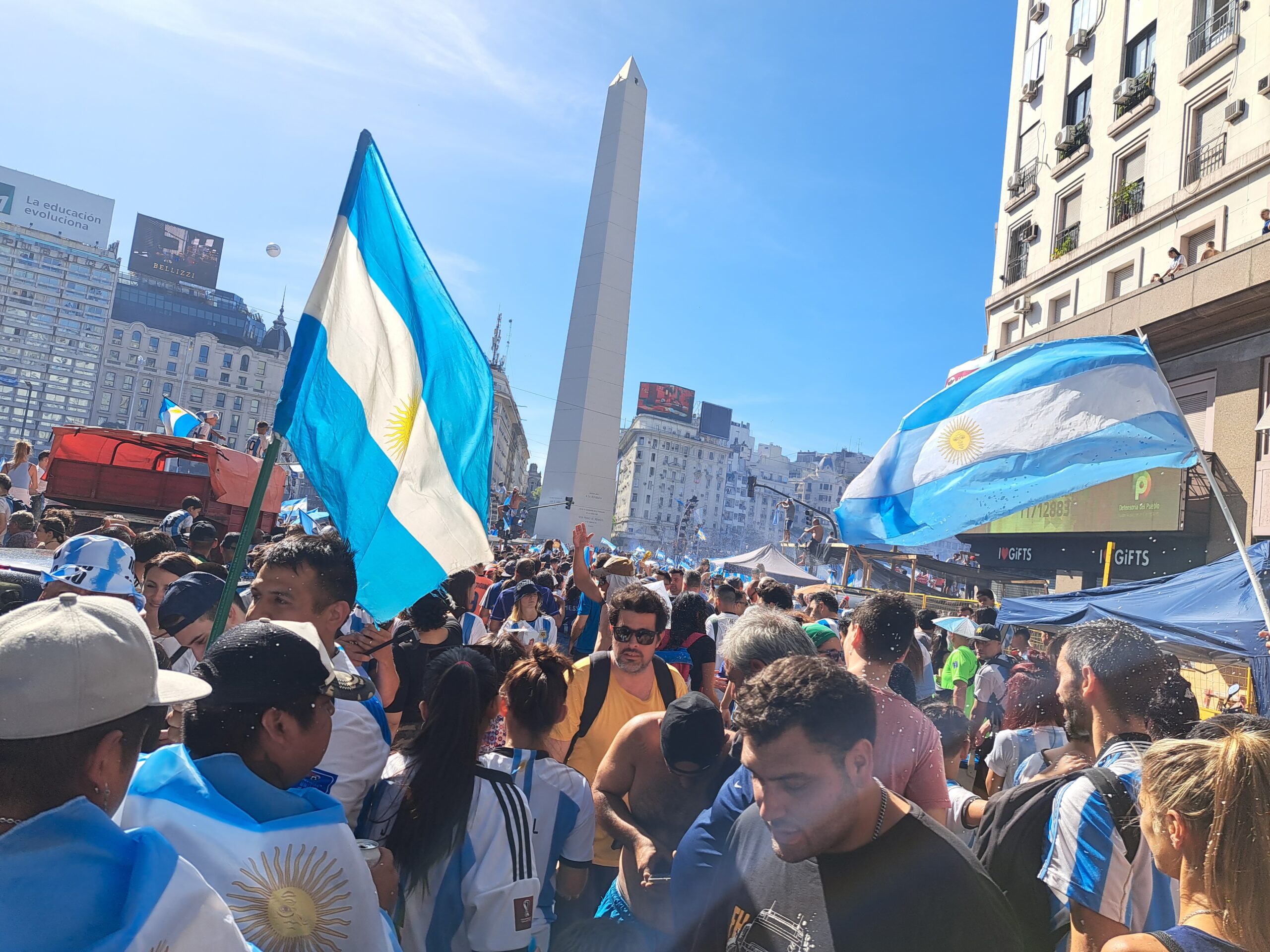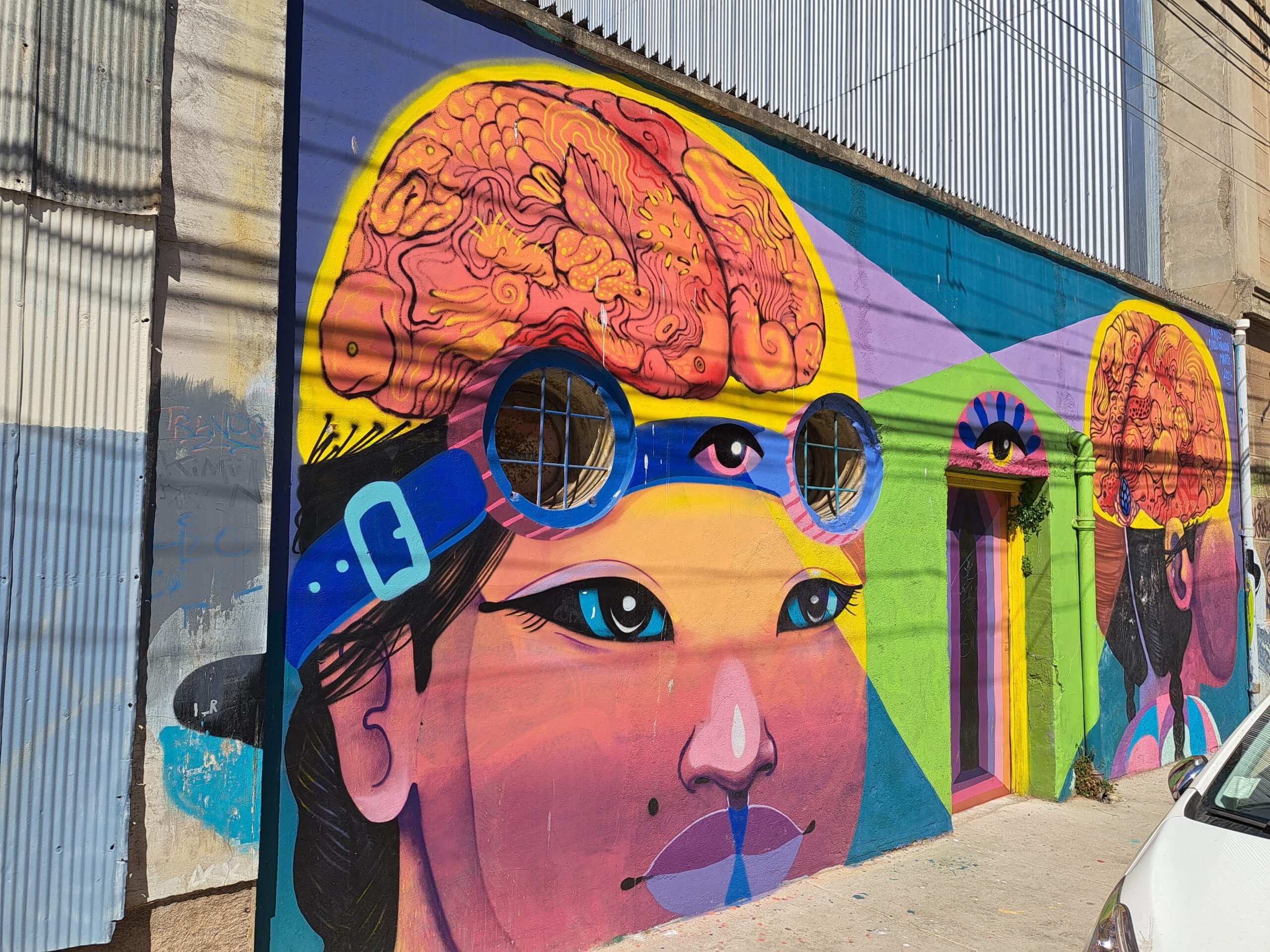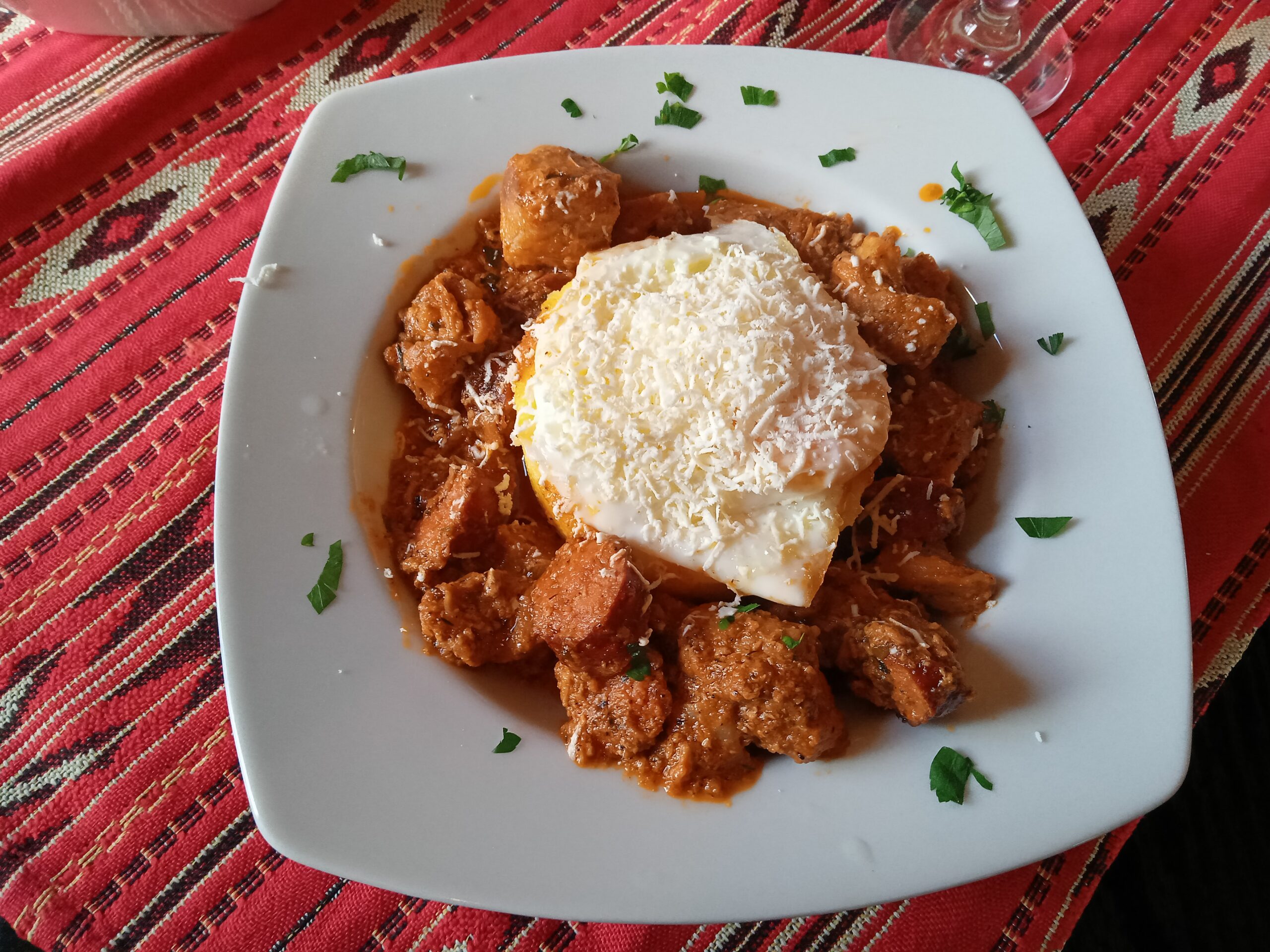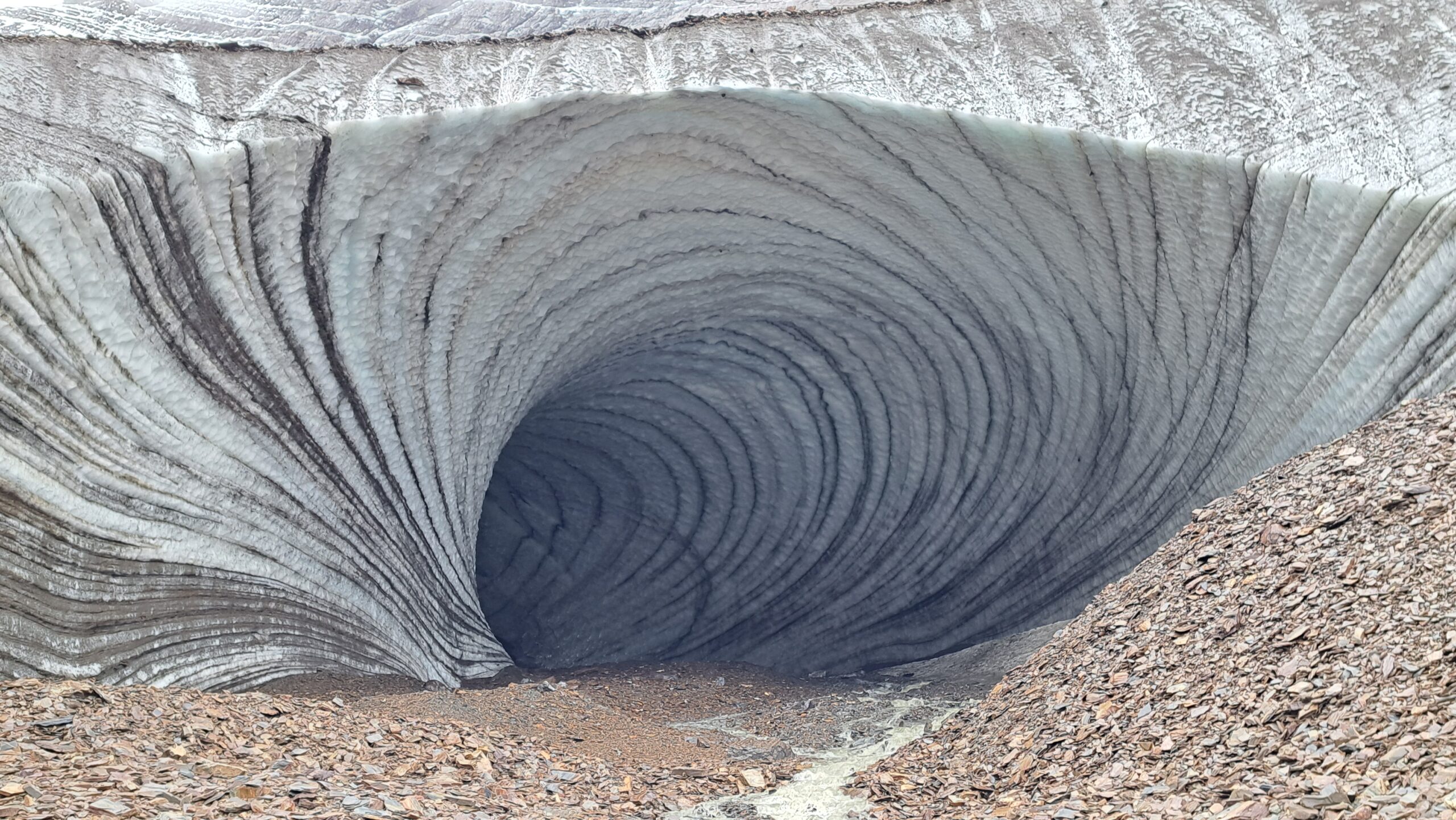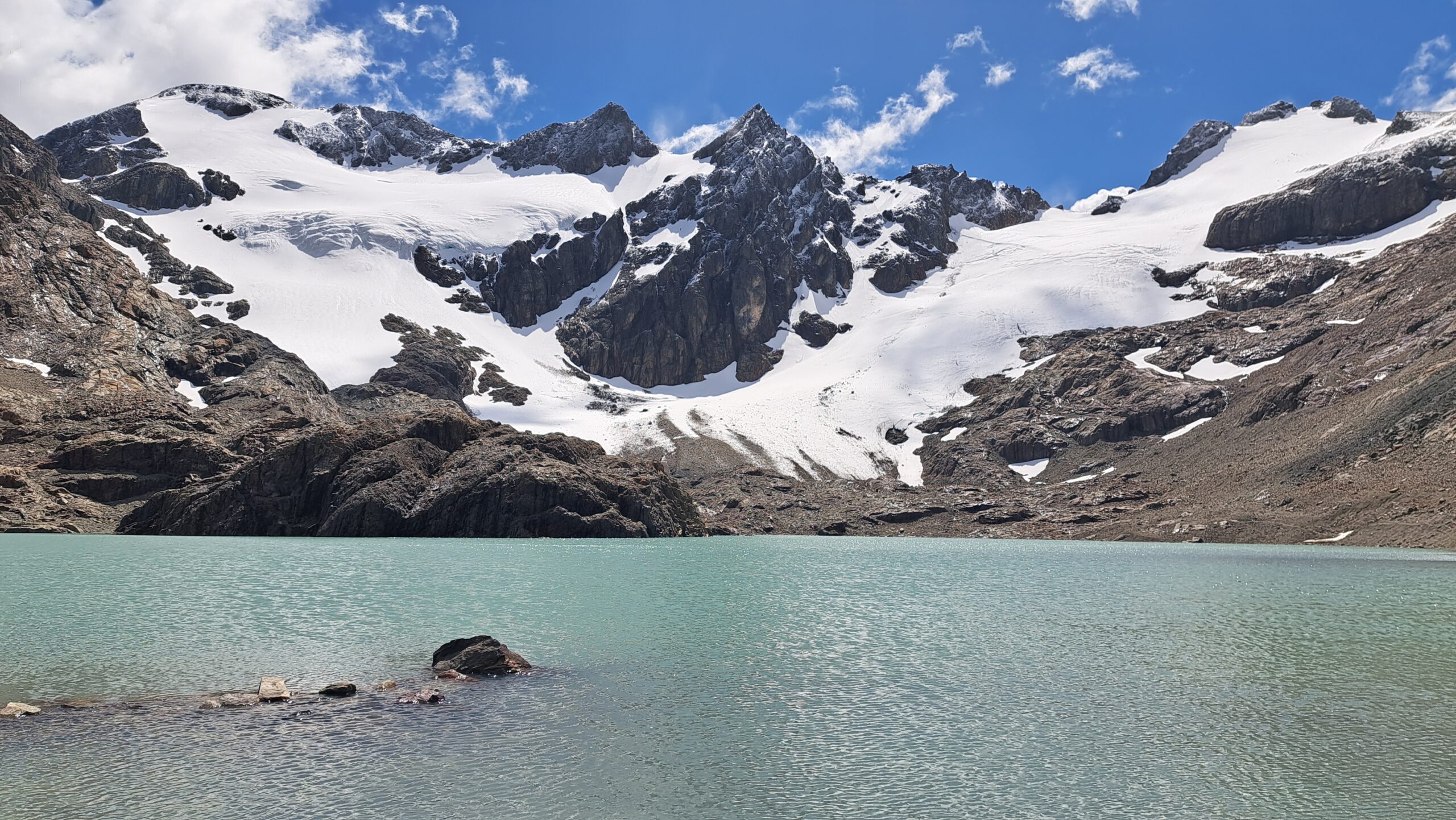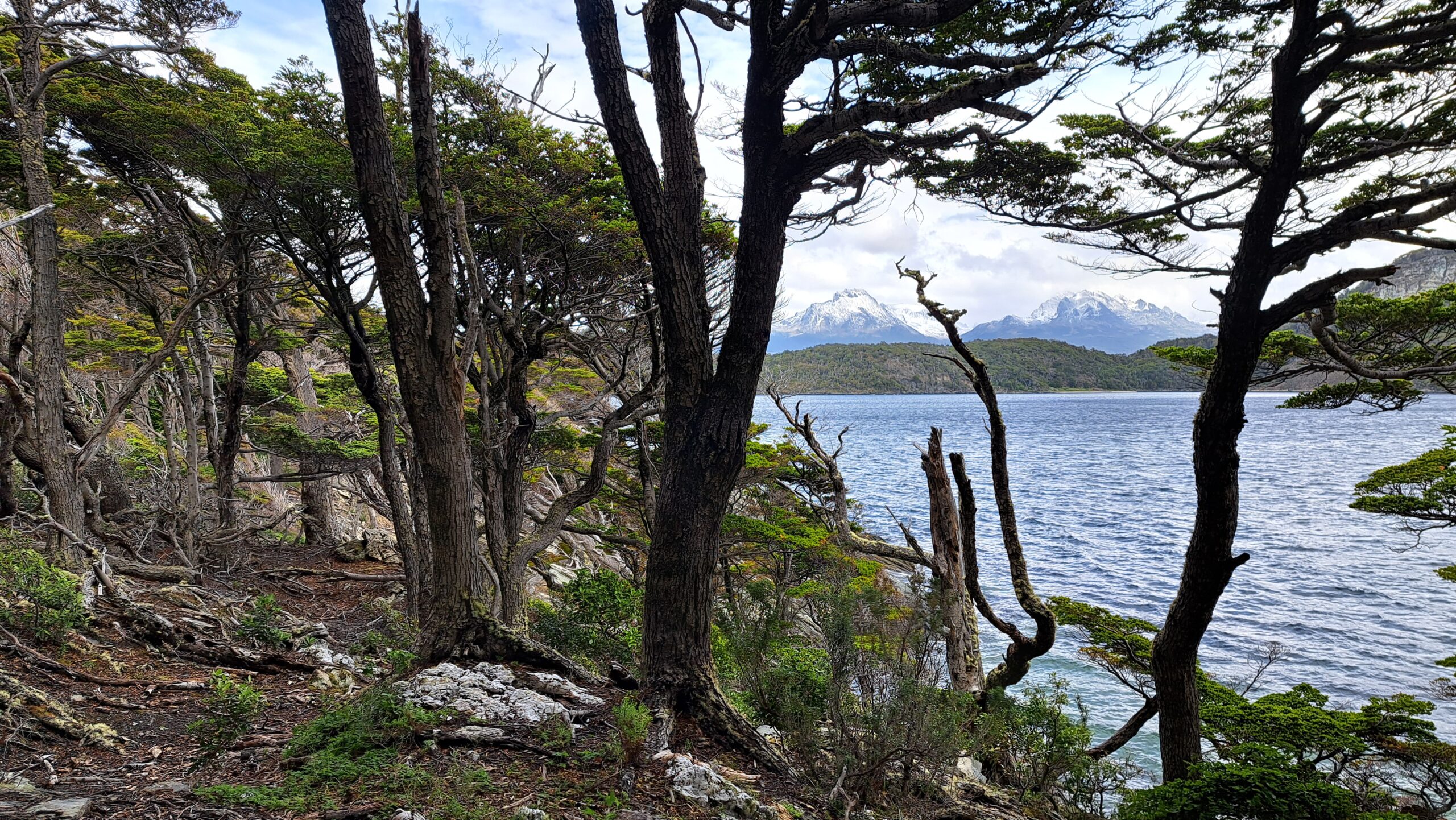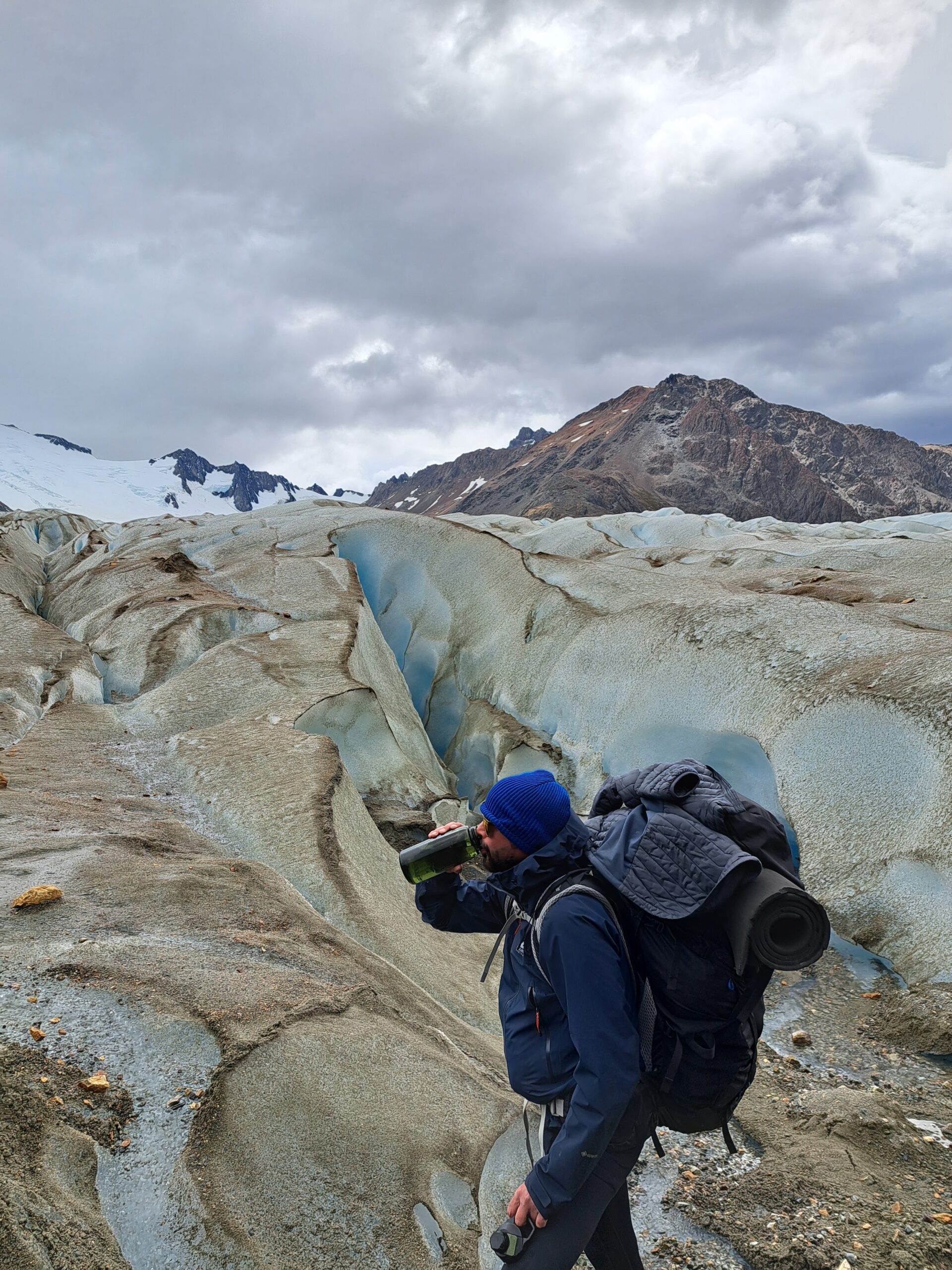
The Huemul Circuit in Patagonia, Argentina, is a fairly demanding 40 mile (65.2 km) trek. Hikers face a total elevation gain of 10,323 feet (or approximately 3,146 meters) and a total elevation loss of 10,632 feet (or approximately 3,241 meters), presenting a challenging yet rewarding experience. This four-day hike offers unparalleled views of the Southern Patagonian Ice Field and diverse landscapes, from forests to windy passes and adventurous elements like river crossings, glacier walks, mountain passes, and ziplines. The terrain varies significantly, with tranquil flat areas, steep descents, and sections requiring careful navigation. The weather can be highly unpredictable, with a possibility of facing everything from perfect conditions to snowstorms and strong winds in a single day. And just to reiterate, the winds are powerful, especially at high passes like Paso del Viento and Paso Huemul. Hence, checking the weather forecast and planning accordingly is crucial.
Essential gear for this trek includes a sturdy hiking backpack, tent, sleeping bag/mat, trekking poles, harness, rope, carabiners and necessary cooking equipment. Since there are no food services along the route, carrying all your food is vital. Water is available along the trail, but it’s advisable to have a water filter, although often I found myself filling up my bottle directly from glaciers.
The hike showcases the best of remote Patagonia– a land where nature’s raw beauty and ruggedness converge, presenting a canvas for adventurers to paint their stories. I had the privilege of doing this hike in Dec 2022, here is my experience.
The hike:
En route to El Chalten, I met Leandro, a fellow adventurer, on the bus. We decided to tackle the hike together. Despite the clear skies, we were cautioned by park rangers about the high winds and advised to hold off for a day or two, of course we foolishly ignored such warnings thinking we knew better.
Day 1: El Chaltén to Laguna Toro: First Steps into the Wild
- Distance: 16 kilometers (10 miles)
- Elevation: 2500 feet gain (762 meters), 2100 feet loss (640.08 meters)
The trailhead is on the outskirts of El Chaltén, near the visitors center. The first day is a gentle introduction, offering breathtaking views of Fitz Roy right from the start. It’s a straightforward hike, with no tough challenges like glacier crossings or steep climbs – those are for later. On the first day, the trail weaves through meadows, takes you over meandering streams and through enchanting beech-tree forests before descending into the valley leading to Laguna Toro. It was on this initial stretch that we crossed paths with Jeremy, a Frenchman working as a digital nomad based out of Buenos Aires. We quickly formed an impromptu trio of wanderers, ready to brave the winds and the wonders ahead.
Day 2: Laguna Toro to Refugio Paso del Viento: Into the Wind
- Distance: 15 kilometers (9.3 miles)
- Elevation: 3000 feet gain (914.4 meters), 2200 feet loss (670.56 meter
On the second day, you notice the scenery changing, becoming more rugged — more rock and ice than the green meadows of day one. It’s a bleak beauty; this is when the hike truly starts to get interesting. There’s a zipline traverse over a rapid river fairly early on in the day. You need a harness and two carabiners (one aluminum, one steel), but it’s not overly technical – a quick ten-minute video at the information center was enough instruction to navigate confidently. However, it was at this point that I was glad I wasn’t doing the hike alone, as pulling myself along a zipline with a heavy backpack wouldn’t have been easy.
Not long after crossing the river, I found myself walking across Glaciar Rio Tunel Inferior, bending down to fill my water bottle with the fresh glacial water beneath my feet, then standing up and looking around at huge glaciers bearing down on me from both the left and the right, winding down from mountains above. One might think that you need to wear crampons on the glacier to stop you falling over, but you don’t as long as you keep fairly close to the edges as the grit and stones will give you sufficient traction.
As we left the glacier, the path led us to the ascent towards Paso del Viento (Windy Pass), a name that proved to be spot-on. The wind here was fierce, almost knocking us off our feet and making walking a real challenge. At times, I had to hunker down on one knee just to avoid being blown off the mountain. It was a battle against the elements, and I absolutely loved it – I felt alive.
Reaching the summit of Viento Pass, we were greeted with sweeping views of the Southern Patagonian Ice Field, such an awe-inspiring sight that I instantaneously forgot the effort it took to get there. It’s the kind of natural beauty that knocks the wind right out of you, literally and figuratively. The first thing that hits you is the sheer open vastness of the ice field; its scale is humbling, and what I was looking out upon was just the tip of the iceberg, excuse the pun. Patagonia’s Southern Ice Field spans out before you like an endless banquet of nature’s finest art, a spectacle of frozen grandeur. This vast expanse of ice stretches over approximately 13,000 square kilometers across Argentina and Chile, making it the third largest ice mass in the world and the largest non-polar ice mass.
The trail continues along the edge of the ice field for a while, making it impossible not to stop and pause to marvel in awe at the raw power and beauty of nature. Beyond the ice, cairns guide the way through rocky terrain, leading downhill beside flowing streams towards a small lake and the aptly named Refugio Paso del Viento (Shelter of the Windy Pass).
Day 3: Paso del Viento to Bahia de los Tempanos
- Distance: 15 kilometers (9.5 miles)
- Elevation: 2431 feet gain (740.97 meters), 4442 feet loss (1353.92 meters)
Post-breakfast, we packed up and left Refugio Paso del Viento and followed the trail which hugged the edge of the ice field for a while. As we climbed towards Paso Huemul, we savored our final glimpses of the ice cap before transitioning into new landscapes and climates. There was more wind at Paso Huemul, once again, not quite as windy as Paso del Viento but it was blowing a gale, nonetheless.
Reaching the mountain’s summit is usually a cause for celebration, but in our case, the real challenge was just beginning. Over the next stretch, we faced a 2300-foot descent, turning our trek into a sort of high-stakes game down a steep and treacherous path. The ground often crumbled beneath us on the steepest parts, making hiking poles not just useful, but essential. I used to think of them as just for the older crowd, but it’s in moments like these that their true value becomes crystal clear. From our high vantage point, Bahia de los Tempanos (Iceberg Bay) lay spread out below, where drifting icebergs dotted the serene waters of Lake Viedma, creating a majestic scene. However, making our way down to this picturesque setting continued to be a tricky affair. The route demanded we navigate thick brush, scramble over gnarly tree stumps, and roots, with one section so precipitous it required a rope. This segment of our four-day trek was by far the most demanding, cementing my preference for uphill climbs over steep descents like this.
Upon arriving at Bahia de los Tempanos, we dumped our bags at the small campsite tucked into the trees off the beach, offering views of Glacier Viedma – it’s got to be one of the most stunning campsites in the world. I then wandered over to the beach and sat on a rock for a while, looking out onto the bay with its floating ice sculptures. It was a surreal and otherworldly setting, as if we had stumbled into a dreamscape, a world away from the torturous, unforgiving descent that led us there. I found tranquility beside the icebergs; here, the world seemed still.
Day 4: Bahia de los Tempanos to the ferry dock – The Final Stretch and Culinary Bliss
- Distance: 24 kilometers (15.3 miles)
- Elevation: 2392 feet gain (729.08 meters), 1890 feet loss (576.07 meters)
After a good night’s sleep to the sound of glaciers calving in the backdrop. We prepared our last breakfast: another round of subpar fare. I had bought an assortment of dehydrated meals – some fancy, some not. While the pricier ones were half-decent, the cheap ones were downright dreadful, almost requiring a pinched nose and gulps of water to swallow. They tasted like what I imagine prison gruel to be, not that I’d know. My mind was already wandering to thoughts of proper food. After breakfast I washed up and meditated for 10 minutes on a rock looking out onto the bay before setting out for home, well the hostel.
The final day’s hike was a fair bit easier, yet it still demanded our careful navigation. The route weaves through grasslands and led us along the shores of a stunning lake, offering a more relaxed pace compared to the previous days’ challenges.
As we neared the end of our journey, the circuit concluded with a zipline traverse over a river. It was less intimidating, lacking the fiercely flowing water and strong winds of the zipline on day two.
Throughout the hike we often referred to the trail as the ‘game show’, as you never knew what it was going to throw at you and just like any good game show, just when you think it’s over, there’s a twist in the tail. The trek officially ends near the ferry dock, but the place was deserted; it looked like we’d be walking back into town. “Jeez,” I thought, “we were almost home free.” But the trail, our unpredictable ‘game show,’ clearly had a few more surprises in store for us. Our sense of direction took a holiday, and soon we found ourselves on an unintended detour along a cow trail. This led to a scramble up a thorny hill, leaving me with some bloody scratches. Jeremy wasn’t spared either – caught in a bog and a misplaced step found one leg knee high in mud. The supposedly easy hike back into El Chaltén turned into a series of comical mishaps, full of laughter, especially recalling Jeremy’s swampy plunge. Just when we thought the ‘game show’ was over, it seemed it had one last laugh at our expense.
My mind drifted but not to the past but the future, more specifically the immediate future and what I would be eating for dinner. I scanned pictures of steaks, burgers and fries, beer and cans of coke in my brain, my pace quickened and before I knew it, I was flying ahead, driven on by my thoughts, skating on a path of my own drool. We hit the main road before long and managed to flag down a car and a very kind Argentian from Buenos Aires kindly gave us and all of our bags a ride back into town in his rental car, hopefully we didn’t leave it muddy.
Back in El Chaltén we’d narrowly dodged an extra charge at the equipment store, our gear returned with moments to spare. Hastily, we retreated to our hostel, craving the kind of clean that only a hot shower can afford after days in the wild. After days of trekking through the breathtaking vistas that define Patagonia, our adventure found its perfect epilogue —a culinary experience that would etch itself in memory almost as vividly as the landscapes we’d traversed.
Ah, the burger— a simple feast that marked the culmination of our journey. It wasn’t merely a meal; it was a symbol of our victory over the challenges we’d faced. Whether it was genuinely the best burger of my life or if my judgement was clouded by days subsisting on dehydrated fare is a moot point. The significance it held in that moment was unparalleled. And the beer that accompanied it? Nothing short of exquisite, making for a pairing that was deeply gratifying.
I sat there savouring each bite and reflected on the hike. Patagonia isn’t just a place; it’s a flavor of its own – raw, untamed, and profoundly moving. The Huemul Circuit is like a gourmet dish, layered with complex textures, each more tantalizing than the last. It tests more than just physical endurance. It was more than a trek; a pilgrimage into the vast wilderness, a dance with the wild winds. It was a journey of discovery, challenge, and unexpected joys. It was a testament to the indomitable spirit of adventure that lies within us all, waiting to be awakened by the wild call of places like Patagonia.
I still keep in contact with the boys; in fact, we have a WhatsApp group aptly named ‘Sufferfest.

